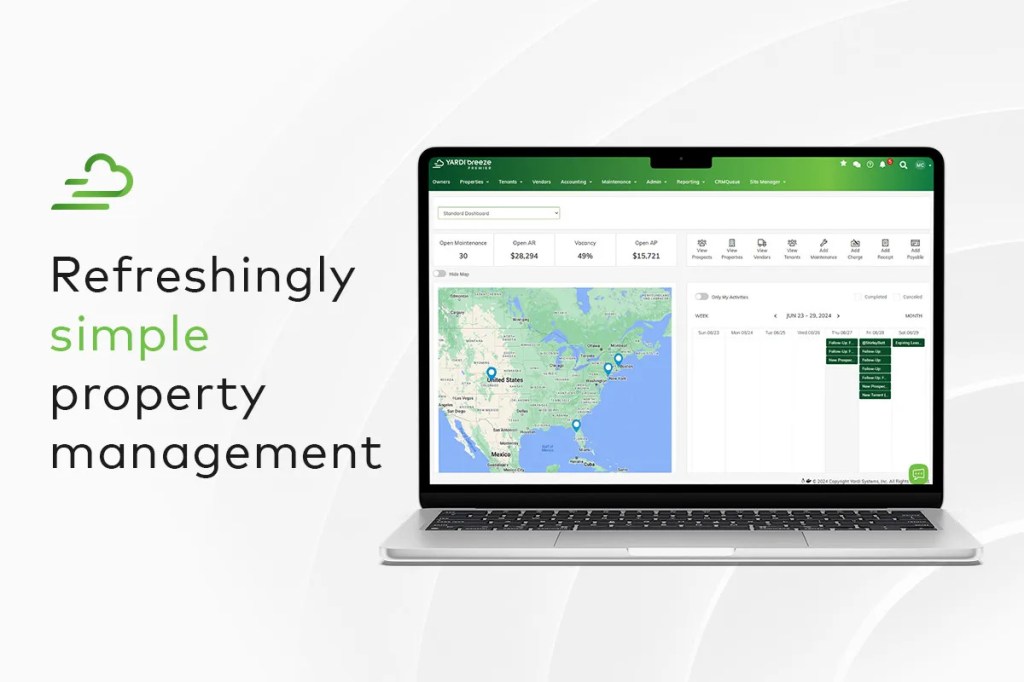
We’re excited to share highlights from the latest Yardi Canadian National Multifamily Report for Q1 2025, reflecting trends from October to December 2024. This detailed analysis draws on data from over 492,000 units across 5,500 properties across Canada. Here’s your sneak peek at the insights, but be sure to download the full report for an in-depth look at the numbers shaping Canada’s rental market.
Cooling rents, simmering challenges
With the rental market easing off the highs of recent years, national in-place rent growth slowed to 5.8% year-over-year in Q4 2024, bringing the average rent to $1,565. While this marks progress toward greater affordability, it also puts into perspective the persistent gap between wages and housing costs, especially in high-demand urban centres. Renters looking for relief still face constrained options, indicating that the pressure on affordability is far from over.
Rising vacancies, evolving preferences
For the first time in years, the average national vacancy rate climbed to 3.6% — the highest since 2021. Bachelor units led the spike, reflecting a trend where renters increasingly team up for larger, shared accommodations. Notably, Calgary, Halifax and Vancouver saw the most significant vacancy increases, suggesting markets may move toward a more balanced environment. However, sustained demand for amenities and proximity to jobs could keep upward pressure on rents in these cities.
Economic shifts & rental impacts
The Canadian economy is navigating headwinds, with GDP growth slowing to 1.3% in 2024 and unemployment reaching 6.7%. Although immigration targets are set to drop in 2025— potentially easing rental demand — inflation dipping below 2% provides a silver lining for everyday costs. Property managers and investors should keep a close eye on these macro forces, as evolving economic conditions will likely shape renter preferences and market stability throughout 2025.
Construction hurdles persist
Despite a 28.2% rise in apartment completions during 2024, new construction has slowed, hampered by high building costs, labour shortages and approval processes. In Toronto, for example, only one rental unit was delivered for every 20 new residents aged 20–34 between 2013 and 2023 — highlighting the supply-demand mismatch. Policymakers and industry leaders continue to explore incentives and fast-track measures to bridge this gap, but meaningful relief may take time to materialize.
Top rent growth markets: Prairie powerhouses
Alberta and Saskatchewan continue to lead in rent growth, with Calgary (+9.7%), Edmonton (+7.9%) and Saskatoon (+7.7%) posting strong gains as renters seek more affordable alternatives to larger metropolitan areas. These Prairie markets benefit from rising employment in sectors such as energy and tech, but their durability will depend on broader economic shifts. Meanwhile, Toronto (+4.3%) and Hamilton (+4.2%) reflect the challenges of already elevated rent levels and fierce competition for space.
Vacancy & turnover trends to watch
With an average annual turnover of 23.1%, many Canadian renters are staying put longer, likely due to ongoing affordability concerns. At the same time, rising vacancies present an opportunity for property managers to refine operations — upgrading older units, enhancing amenities and rethinking marketing strategies to meet evolving renter demands. This interplay of higher vacancy and consistent turnover could serve as a buffer against sharper rent increases in the coming quarters.
Ready to dive deeper?
Canada’s rental market is entering a new chapter, balancing the effects of past growth with emerging challenges. Whether you’re a property manager, investor or a keen market observer, the full report dives further into lease-over-lease rent differentials, the bachelor, one-bedroom, three-bedroom segments and which CMAs are poised for future growth. Looking to streamline your rental operations? Yardi Breeze Premier offers tools to manage leases, track rent growth and improve your bottom line — ensuring you’re well-equipped for what’s next. Stay tuned for more updates to keep you ahead of the curve and download the full report.



